A Conversation with Richard Renaldi about ‘Touching Strangers’
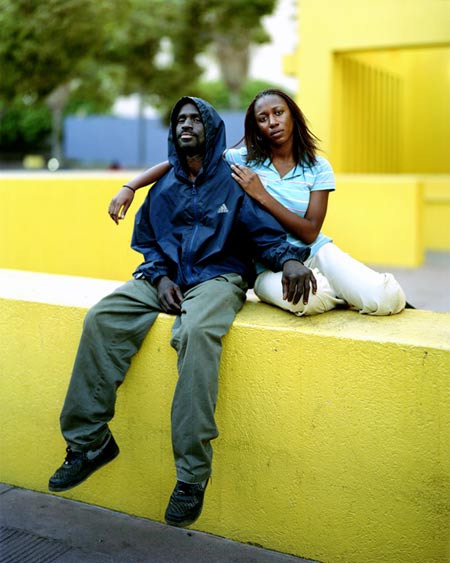
When my friend Richard Renaldi showed me the first images from the new series Touching Strangers I was just amazed. Asking two complete strangers to not only pose with each other, but to also touch each other while doing that… And this in a culture whose discomfort with touching someone you don’t know, or touching something that someone else might have touched still baffles me, even after having spent almost ten years in it!
I remember I asked Richard how he actually did that. How do you ask complete strangers to pose with and touch each other? How do you do that in New York City of all places? And when I saw more of the series, months later, I thought this was something for the blog. As it turned out, the November 2008 issue of Fraction Magazine was going to showcase Touching Strangers, and the idea was hatched to combine a conversation with that feature (which has a lot more images from the series).
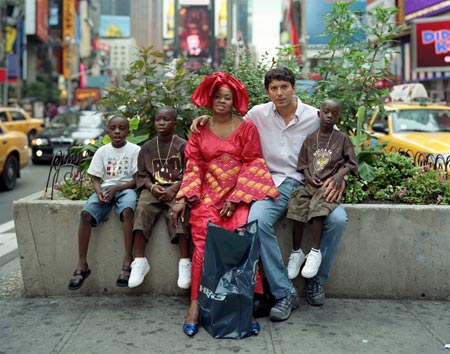
Jörg Colberg: Can you tell me a little bit how you developed the idea behind Touching Strangers? What are the basic ideas?
Richard Renaldi: While working on my series Bus Travelers, I found myself for the first time making large format portraits of people who didn’t know each other. These images most often took the form of two or more strangers sitting on the same bench, waiting for a bus. It took some directing and orchestrating on my part, as people need to participate actively in the process of being photographed with a view camera. While looking through Bus Travelers, I realized what a challenge it had been to make those pictures, and felt that they were compelling in a different way than my individual portraits. My thoughts about that process led me to the idea of creating new photographs of strangers together, but pushing things a bit further by asking them to physically touch each other. Thus was born the idea of Touching Strangers. In thinking more about how I would approach the project, I decided I wanted the images to explore how notions of trust, love, social conventions, and taboos are expressed through body language. After that it was really just getting up the courage to actually go out and do it.
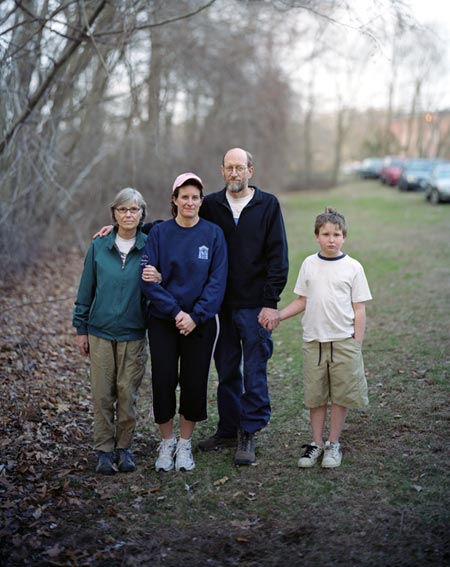
JC: Given the aversion to actually touching someone you don’t know when working on the portraits how did you approach your subjects, and what did you tell them about what you were after?
RR: It is rather awkward to approach someone and ask them if they are interested in touching another stranger for a photograph. I think maybe my nervous, slightly pleading voice kicks in, combined with a little charm. I generally give them my spiel about being a photographer working on a project, and I try to have my book, Figure and Ground, to show to them. It was never easy - though most everyone who agreed to participate was a good sport. Most people eventually grasped the concept, and often it seemed to be a pleasant distraction from their day. As far as telling them what I was after, I was initially not sure myself. That seems apparent to me now, looking at the first three or four setups I did. For those first photographs, I asked for the least amount of touching possible because I was not yet comfortable myself with this new way of working. I did however start thinking more about what I wanted to elicit from my subjects, and I studied a lot of portraiture of friends, family, and lovers together, from the 19th century in particular. As a result I became more aggressive in what I would ask the strangers to do with each other. I am still working on this and looking forward to seeing where it will take me…
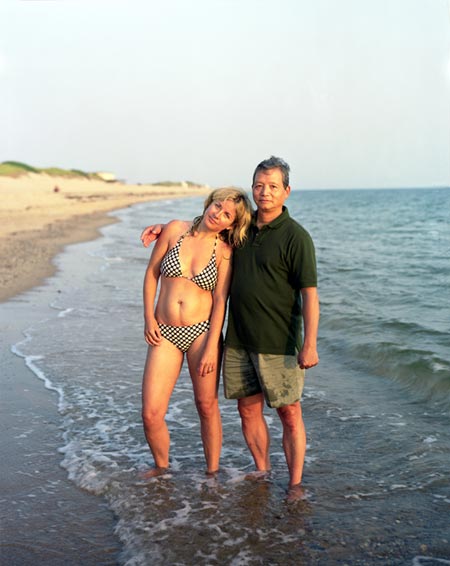
JC: How did you pair people up? From looking at the photographs, it seems like in almost all cases you got something very interesting out of the pairing (or the groups), and it can’t all be just sheer luck. Did you have an idea of who might work with whom, to create an interesting image?
RR: Finding good pairs is a matter of chance, patience and instinct. Most often, it is a matter of luck and timing. Sometimes I try to find people from different socioeconomic backgrounds, different races, sizes, and sexual orientation. But occasionally, I find myself trying too hard to look for opposites. One of my favorite images from Touching Strangers is Reginald and Nicole - a portrait of a black man and black woman in Pershing Square in downtown LA [shown at the very top of this post]. I had originally wanted to make a portrait of Reginald, who was homeless, with a white middle class woman to feature the contrast, and explore any potential discomfort. However, there were not many people around, and a white girl I asked said no. After waiting and waiting, I decided to ask a black woman who was in the park talking on her cell phone - scolding myself for trying to force a contrast, when in fact race is only one small factor - and a rather obvious one - in our comfort level with touching a stranger.
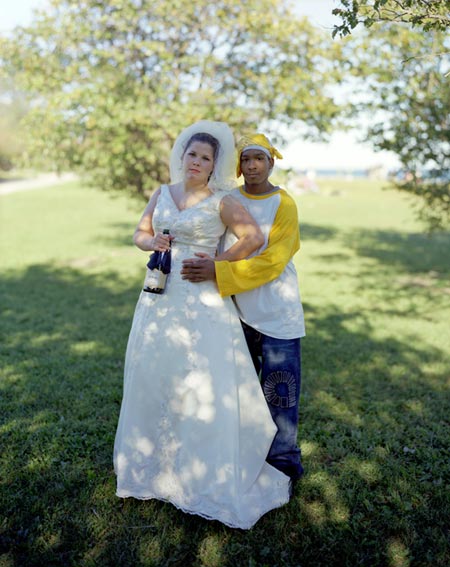
Another pairing that was unusual and fun features a new bride on the Chicago lakefront. I was hanging out at the park with my friends when I noticed another photographer shooting a wedding party. The crazy idea popped into my head to approach the wedding party and ask the bride if she would collaborate. Thrillingly, she was game. I then went scouring the park to look for a partner for her. When I found Xavier I was immediately drawn to his style. I made this picture while the wedding photographer documented the proceedings, and with her bridesmaids and family looking on. I notice now when I look at that image that Xavier’s do-rag / bandana is a lovely compliment to Julie’s veil.
On other occasions, the pairings felt so comfortable and natural that it seemed as if the people could be friends or a family. However, my impression is that viewers looking at this project for the first time, knowing nothing about the conceit, find the nature of the relationships very mysterious.
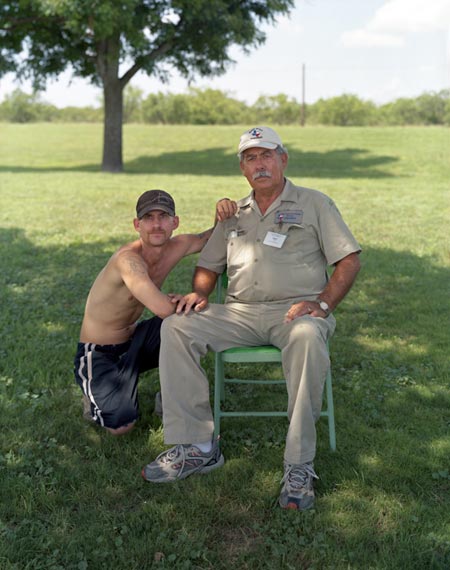
JC: The 8x10 camera is not exactly a snapshot camera, and it must have taken a bit of time for you to set up each photo. Did you notice anything happening between the subjects while you were setting up the shot? Did people decide they couldn’t do it? How did people interact inside the little group you had created? And did anybody actually exchange phone numbers or anything like that, to maybe stay in touch?
RR: Often, the subjects would chat with each other while I was setting up. Once someone committed to participate there may have been some residual hesitation which can be seen in their body language. For the most part though, everyone involved was a willing collaborator. As far as I know, no one exchanged phone numbers. But I do try to email the subjects their pictures, and I include both email addresses so they could theoretically get in touch with each other…
 By
By